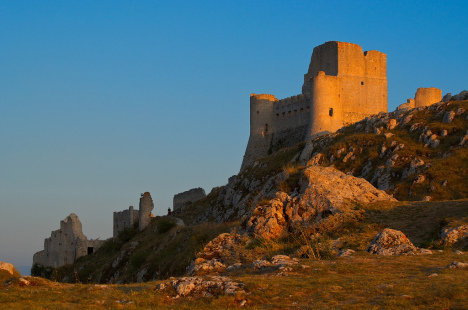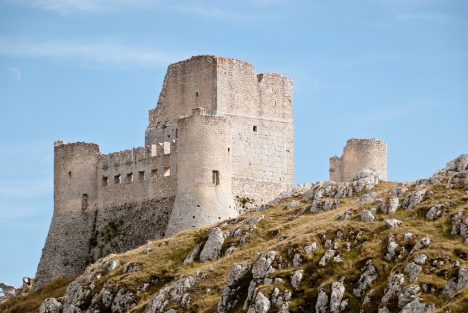A Guide to Rocca Calascio – the highest fortress in Italy

Italy is known for being home to a number of fascinating pieces of architecture as well as countless historical landmarks. Few destinations in the country combine architecture, scenery and history quite like the impressive Rocca Calascio. These incredible ruins make up the highest fortress in Italy thanks to a location atop a hill more than 1460 meters above sea level.
It is also one of the oldest fortresses left in the country. If you are planning a trip to Central Italy, then be sure to add the Rocca Calascio to your travel itinerary. Use this guide to learn more about the history of the castle, visiting the area and finding the best deals on accommodation in the area.

La Rocca di Calascio / Alessandro Giangiulio
Getting to Calascio
There is no airport in Calascio or in the nearby city of L’Aquila, so most international visitors who want to arrive by air will need to land at either the Ciampino or Fiumicino airports in the capital city of Rome. There is also the option of arriving by bus or train. The nearest train station is in L’Aquila, but local buses will bring travellers directly to the small town of Calascio. Those who are driving can park directly adjacent to the Rocca Calascio or at the bottom of the hill. If you are able to walk along the path up the hill, it is recommended that you do so in order to enjoy the beautiful scenic views. The walk has a gentle incline and is not challenging. It should take no longer than 15 minutes to get from the bottom of the hill to the top.
History of the Rocca Calascio
In the 10th century the Rocca Calascio was first built as a way to watch the surrounding areas. At the time it was a single tower and meant only to alert the citizens of the village in case intruders attacked. During the 13th century construction continued on the fortress and the four towers surrounding the inner fortress were built. While the Rocca Calascio was never actually damaged in any battles or wars, significant damage was done due to a large earthquake in the 15th century. Today the fortress is in ruins but the walls and towers are still standing.
Visitor’s Information
Visitors will be happy to learn that there is no admission fee for visiting the Rocca Calascio. However, those who want to park in the closest parking lot next to the fortress will have to pay a 2 Euro fee. There are no tours of the fortress available, but brochures are available in the town of Calascio that can explain more about the history of the structure and the types of architecture involved. Opening hours are every day between sunrise and sunset.

The ruins of Rocca Calascio, a tremendous visitor attraction / Stijn Nieuwendijk
Nearby Attractions
One of the best things to do after visiting the Rocca Calascio is to visit the small village of Calascio. There are a handful of small cafes and shops in town that cater to visitors and offer some delicious local Italian specialties as well as some charming medieval architecture. A short drive to the city of L’Aquila will bring you to other interesting attractions like the large Duomo Cathedral, the Museo Nazionale d’Abruzzo and the fountains of Fontana delle 99 Cannelle.
Accommodation Options in the Area
There are no accommodation options on site at the Rocca Calascio or in the nearby village of Calascio. However, there are plenty of choices just a short trip in any direction. Italian villas are available for rent throughout the Abruzzo province e.g. at http://www.holiday-rentals.co.uk/Italy/r39.htm. For a more authentic accommodation option, consider apartment rental in the city of L’Aquila. You can live life like a local and get to see the real culture of the city this way.
If you are planning your next trip to Italy book hotels, flights, rental cars at best price guaranteed!

